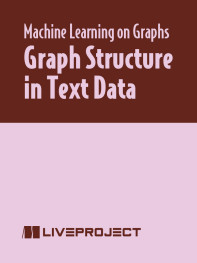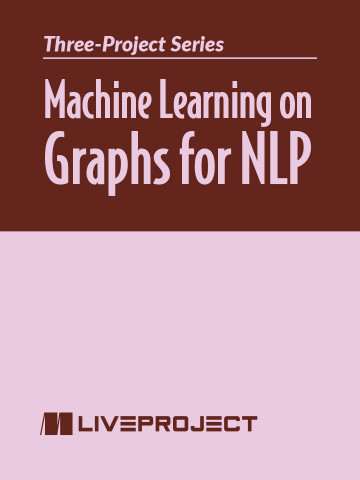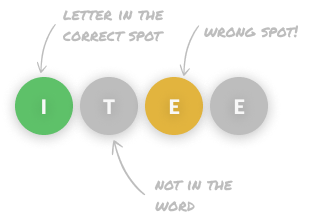Machine Learning on Graphs for NLP you own this product
- prerequisites
- intermediate Python • basic NLP and Graph Theory • intermediate deep learning with PyTorch • Basic Neo4j • Basic Pytorch Geometric • Basic Colab
- skills learned
- convert text into graphs • explore centrality algorithms for clustering using Neo4j • converting graph nodes to vectors • node classification by text embedding signals and citation graph structure signals • build a GNN classifier with PyTorch Geometric
pro $24.99 per month
- access to all Manning books, MEAPs, liveVideos, liveProjects, and audiobooks!
- choose one free eBook per month to keep
- exclusive 50% discount on all purchases
lite $19.99 per month
- access to all Manning books, including MEAPs!
team
5, 10 or 20 seats+ for your team - learn more

Welcome to the publishing industry! Imagine you work for a company that publishes scientific articles. Your task is to categorize these articles into different subject areas, empowering the company to gain a better understanding of their client base and serve them more effectively. In this liveProject series, you’ll use various graph techniques to look at the content in different ways. You’ll attempt to impute a graph structure from document similarity, then attempt to categorize the documents using graph embeddings generated from the provided citation graph. Finally, you’ll combine content signals from the text and graph signals from the citation graph to categorize these articles into a small set of subject areas.
here's what's included

Imagine you work for a company that publishes scientific articles created by its customers—primarily researchers and scientists in the field of statistics—whose volume of research has grown so large that it’s not possible for your company to read every paper nor for the researchers to stay on top of everything happening in the field. Your task is to use automated means to find some structure in the collection of scientific articles so that the company can more easily home in on the researchers’ interests and help them research more effectively. To do that, you’ll generate document embeddings, use them to impute a document graph, and execute graph algorithms against this graph in order to generate insights from it.

Now that one of the data scientists at your publishing company was able to extract citations from the full text of the representative text corpus, your task is to generate new vector embeddings based on the citation graph, then cluster the documents using these embeddings to gain insight from the graph structure.

In this liveProject, you’ll implement a Graph Neural Network (GNN). This powerful model will allow you to use the document content from the first liveProject combined with the structure of the citation graph from the second liveProject to build an even more powerful model—one that will predict the sub-field of statistics of each of your customers’ papers.

choose your plan
team
- five seats for your team
- access to all Manning books, MEAPs, liveVideos, liveProjects, and audiobooks!
- choose another free product every time you renew
- choose twelve free products per year
- exclusive 50% discount on all purchases
-
![]() Machine Learning on Graphs for NLP project for free
Machine Learning on Graphs for NLP project for free
Prerequisites
These liveProjects are for Natural Language Processing (NLP) practitioners who have an intermediate level of knowledge of the Python programming language (especially in the NLP domain) and who are ready to uplevel their NLP skills by applying graph-based tools to their text corpora. To begin these liveProjects, you’ll need to be familiar with the following:
TOOLS
- Intermediate Python
- Basic SpaCy, Neo4j database, and the Neo4j Graph Data Science (GDS) library
- Intermediate Pytorch
- Basic Pytorch Geometric
- Intermediate linear algebra
- Intermediate Deep Learning
- Intermediate NLP
- Basic Graph Theory
you will learn
In this liveProject series, you’ll learn skills, tools, and techniques for applying powerful graph-based tools to text corpora for effective NLP:
- Converting document text into vectors
- Computing similarities between documents
- Determining thresholds for connecting documents
- Generating graph analytics
- Applying graph algorithms to the graphs
- Representing graph nodes as vectors
- Node classification by text embedding signals and citation graph structure signals
- Applying off-the-shelf machine learning techniques to vectors
- Using document similarity signals to cluster documents
- Converting node and edge data provided into a PyTorch Geometric Dataset
- Building the GNN classifier
- Training and evaluating the classifier
 features
features
- Self-paced
- You choose the schedule and decide how much time to invest as you build your project.
- Project roadmap
- Each project is divided into several achievable steps.
- Get Help
- While within the liveProject platform, get help from other participants and our expert mentors.
- Compare with others
- For each step, compare your deliverable to the solutions by the author and other participants.
- book resources
- Get full access to select books for 90 days. Permanent access to excerpts from Manning products are also included, as well as references to other resources.



 Machine Learning on Graphs for NLP project for free
Machine Learning on Graphs for NLP project for free
